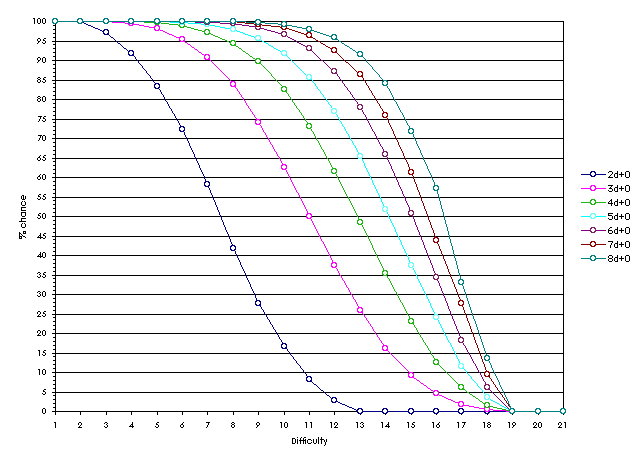- Joined
- May 15, 2017
- Messages
- 7,606
- Reaction score
- 19,627
So, I want to take a look at dice mechanics a bit and think about different types of core mechanics in a game. I'll lay out a few examples so you can get an idea of granularity
so, what other ones are out there?
- linear - this is d20 and d100. Roll a single die (even if it's multiple dice interpreted as a single die) and go against the target number, above or below. I don't care about crits or fumbles, as those are particular interpretations of results. Savage worlds ends up here as well, as they tend to have singular dice of a particular size. Exploding just adds to the single die value, and is not really a bell curve.
- bell curve - 2d6, 3d6, 2d10, etc. you take the total of the dice against a target number. The important feature is that it is a bell curve
 fudge dice end up in here as well, as they are functionally totaling the dice. 5e's advantage/disadvantage ends up here as well
fudge dice end up in here as well, as they are functionally totaling the dice. 5e's advantage/disadvantage ends up here as well - dice pool - WoD and SR are notable examples. Roll the pool of dice, count the number of results that hit a target number. the shape of this changes a bit based on the TN and the number of dice, but it's not linear exactly, and not really a bell curve. Truth, it is probably closer to linear in most ways, and it could be argued to be.
so, what other ones are out there?







 !
!